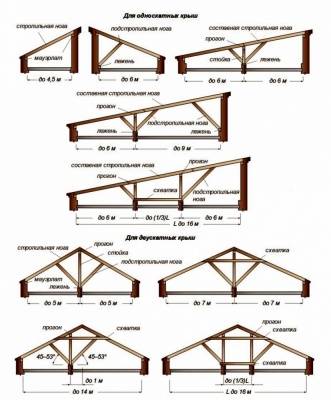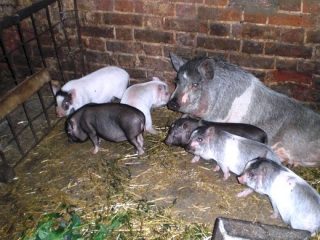Content
Every owner needs a shed on his own property, but he doesn’t always want to incur large costs for its construction. It will be easier and cheaper to build a utility block after the construction of a residential building, since there are always excess materials left. But what to do if a person has nothing on his hands, but a utility room is still needed? Now we will look at what you can use to build a shed with your own hands cheaply and quickly.
Deciding on the purpose of the shed
Before you build a cheap shed, you need to decide on a number of important issues. The design of the utility block will depend on this, and what you will build it from:
- When building even the most inexpensive structure, ask yourself why you need this shed. An answer based on the principle: “It will be useful for the future” or “To keep up with the neighbors” will not work. You need to know the purpose of the barn. Let’s say, if you need a woodshed, then it will be cheaper to assemble a frame outbuilding from boards and timber. To keep animals you need a strong and warm building. From a cheap material, it is better to give preference to foam concrete.
- The amount of expenses depends on the size of the utility unit.If the built barn will be used to keep poultry or animals, you need to roughly calculate how many livestock will live in the room.
- You can only build a shed cheaply on your own. If you plan to use the services of hired builders, then about half of the allocated budget will go to pay for the work. You also need to buy the right material. Often, outbuildings are built from used bricks or cinder blocks. They even use old lumber, which is sometimes sold by farmsteads after dismantling the buildings. Cheap new materials for walls include foam block or wood concrete.
Having decided on all these issues, you can begin to calculate the budget for the future construction.
Cheap shed options
Now we will look at several options for how to build a shed with your own hands so that it costs less for the owner.
Frame barn – cheap and fast
The first place among cheap sheds should rightfully be given to the frame structure. It will not be possible to build anything faster than such a utility block, and even a person without construction experience can do all the work independently.
Let's get acquainted with what the order of construction of a utility block looks like:
- Before construction begins, you need to make a drawing of the barn. Guided by the diagram, mark the area. The site is cleared of debris and vegetation, after which an embankment about 15 cm thick is made of gravel, crushed stone or screenings.
- Frame sheds are usually placed on a columnar foundation, but our goal is to build cheaply and quickly. This means that the support posts of the frame themselves will serve as the basis. To do this, take a beam with a cross-section of 100x100 mm and lubricate one end of all the pillars with bitumen. You need to treat an area about 70 cm long.Two layers of roofing material are wound on top of the hot bitumen.
- Adhering to the markings, holes 80 cm deep are dug along the perimeter of the future building. A layer of crushed stone or gravel 15 cm thick is poured onto the bottom. Racks are inserted into each hole, leveled vertically, and then filled with concrete mortar. To get a pitched roof on a frame barn, the front pillars are made 60 cm higher. It is optimal to install poles on the front side of the utility block with a height of 3 m, and the rear ones - 2.4 m.
- Next, a horizontal timber frame is nailed to the top and bottom. To make the frame rigid, you need to make a couple more intermediate straps.
- To make a pitched roof, floor beams with a pitch of 60 cm are attached to the beam of the upper framing of the frame. For this, a board with a section of 50x100 mm is used. The length of the beams should protrude beyond the boundaries of the frame on both sides by at least 50 cm. The resulting roof overhang will protect the walls from rain.
- Sheathing of frame sheds is usually done with wooden boards or clapboards. Moreover, they can be nailed vertically or horizontally. The method of fastening the casing is shown in the photo. The boards are nailed overlapping to avoid the formation of cracks. In the cheapest version of a frame shed, the use of a slab is allowed for cladding the walls.
- Now all that remains is to cover the finished utility unit. The cheapest roofing material is slate or roofing felt. First, sheathing is nailed onto the floor beams. For roofing felt, it is made of solid plywood or OSB. A 25 mm thick board is nailed under the slate in increments of 40–50 cm. Roofing felt is used as waterproofing.
The video shows the production of roof sheathing:
- The floor inside the frame utility block is laid from boards or OSB boards. The ceiling is lined with similar materials.For a winter shed, all cladding elements are made double, and thermal insulation is placed in the voids. You can use mineral wool, or cheaper - sawdust.
A frame shed will last at least 10 years. During this time, maybe the owner will be able to save money for a more serious construction.
The video shows an example of the construction of a frame shed:
Hoses block made of corrugated sheets
You can build not only a cheap, but also a beautiful outbuilding from corrugated sheets. The material is inexpensive and very light, and will last for many years. The only disadvantage of corrugated sheeting is its weak rigidity. Before covering the walls, the frame of the shed will have to be strengthened with additional jibs and lintels.
In essence, a utility block made of corrugated sheets is an ordinary frame shed. Only the covering material differs. The frame is assembled from timber, but it is better to give preference to a profile pipe. The costs will not be much more, but once a metal structure is built, it will last the owner for a lifetime. The profile frame is assembled by welding. Sometimes craftsmen fasten elements with bolted connections.
The corrugated sheet is secured with galvanized self-tapping screws and a rubber washer. When covering walls, it becomes necessary to trim the sheets. It is better to do this with electric metal shears. If you don't have them, you can use a hand tool. But with such scissors it is easy to cut corrugated sheets across the waves. It is difficult to do this along, since the stiffening ribs prevent the sheet from bending.
You can use a grinder to cut sheets, but the abrasive wheel burns the protective coating of the corrugated sheet. Over time, this area will begin to rust.If there is no other choice, you can cut the sheet with a grinder, and then it will be easier to trim the burnt edge with scissors. Alternatively, the place of the cut can be hidden under another sheet, because the laying is still done with an overlap. In the corners of the barn, around the window and door opening, the cut edge of the corrugated sheet can be hidden under the additional elements.
Reliable and inexpensive barn for animals and poultry
If you need to cheaply and quickly build a barn for keeping poultry or animals, then you cannot find a better material than foam blocks. Of course, a utility unit will cost more than a frame structure, but it will last for many decades. Moreover, a foam block shed is excellent for winter use.
Work on the construction of a shed is carried out in the following sequence:
- A shed made of foam blocks is considered a permanent building. Here you need to take the design and development of drawings seriously. This will help you calculate the required amount of material as accurately as possible.
- Construction begins with marking the area for the strip foundation. Further actions involve digging a trench up to 80 cm deep. The width of the concrete strip is 5–10 cm greater than the thickness of the wall.
- Formwork is installed around the trench. The bottom is covered with a 20 cm layer of expanded clay or crushed stone with sand. Now this cushion and the walls of the trench are covered with roofing felt so that the liquid solution is not absorbed into the ground.
- Inside the trench, a box-shaped reinforcing frame is knitted from steel rods. It is optimal to use reinforcement with a thickness of 12 mm for this. When the frame is ready, the trench is filled with concrete mortar with the addition of crushed stone. The height of the tape should protrude from the ground by at least 10 cm.
- After about a month, the concrete strip will gain its strength, after which you can begin building walls. First, the foundation is covered with two layers of roofing material. The laying of foam blocks begins from the corners, gradually moving to the sides. It is better to use a special adhesive mixture as a solution. It is sold in any construction stores. In the worst case scenario, concrete mortar will do.
- When all the walls are built, it’s time to reach the roof. On such a barn you can install a single- or gable roof. The first option is simpler and cheaper, and the second roof design allows you to organize attic space for storing things.
- Foam block is considered a soft material. In order to properly distribute the load from any roof structure, a mauerlat made of timber is laid on the walls. Floor beams are nailed on top, and then a rafter system of a single-pitched or gable roof is installed.
It is advisable to choose a high-quality roofing covering for a shed made of foam blocks. Slate or corrugated sheets are suitable from inexpensive materials. What the floor inside the barn is made of depends on who will live in it. It's better to send boards to the goats. A clay floor with sawdust or straw is suitable for birds. The pigs will have to pour a concrete screed, but it is advisable to lay waterproofing and insulation under it. And in the pen where the pigs will sleep, it is necessary to lay boards.
Conclusion
To truly build a cheap shed, you must first take a closer look at what materials you have on hand. After this, you can start choosing the type of construction.


















